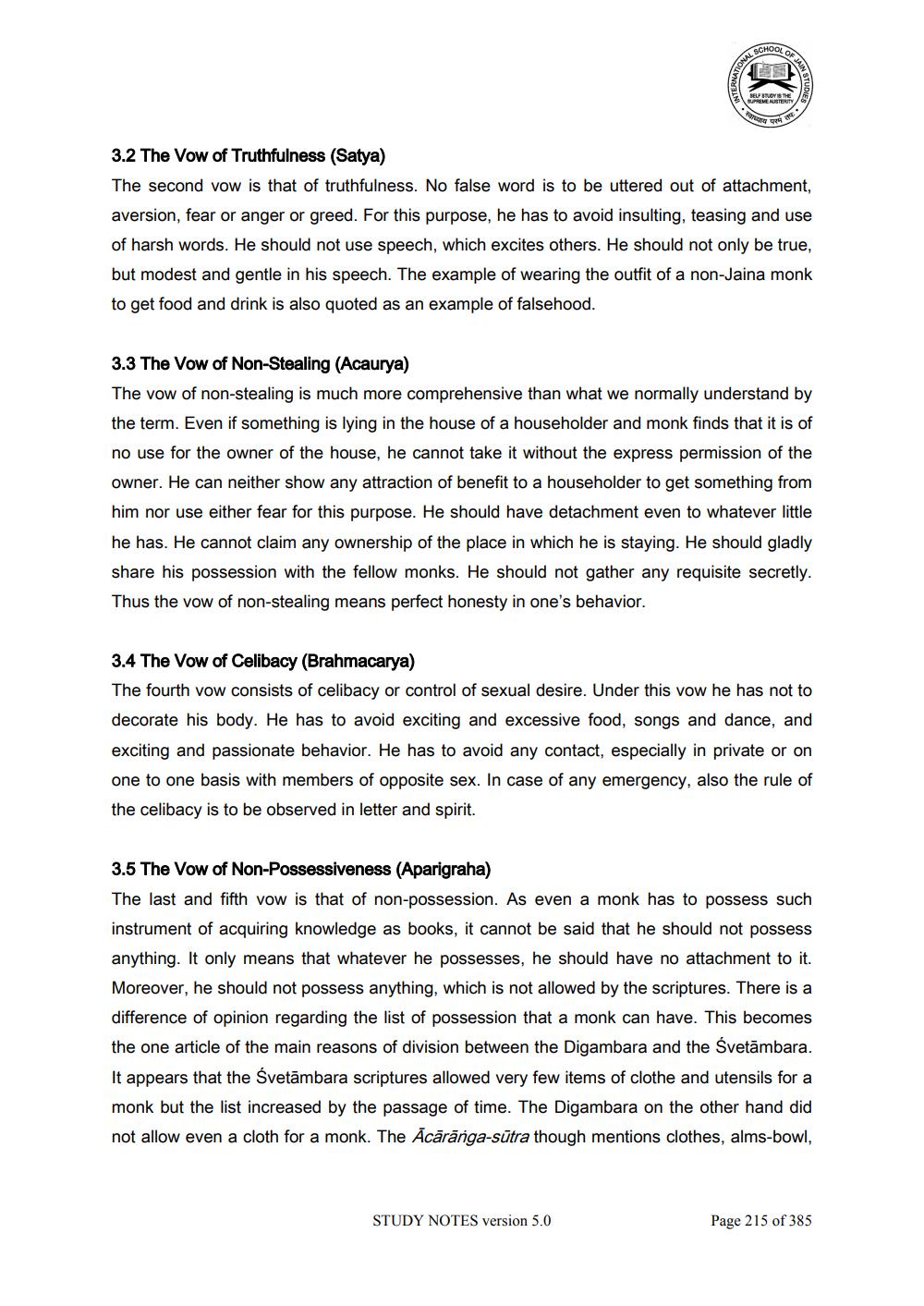________________
INTERNATION
SCHOOL
SELF STUDY IS THE
SUPREME AUSTERITY
Farenga
STUDY NOTES version 5.0
OF
परम
तप
3.2 The Vow of Truthfulness (Satya)
The second vow is that of truthfulness. No false word is to be uttered out of attachment, aversion, fear or anger or greed. For this purpose, he has to avoid insulting, teasing and use of harsh words. He should not use speech, which excites others. He should not only be true, but modest and gentle in his speech. The example of wearing the outfit of a non-Jaina monk to get food and drink is also quoted as an example of falsehood.
3.3 The Vow of Non-Stealing (Acaurya)
The vow of non-stealing is much more comprehensive than what we normally understand by the term. Even if something is lying in the house of a householder and monk finds that it is of no use for the owner of the house, he cannot take it without the express permission of the owner. He can neither show any attraction of benefit to a householder to get something from him nor use either fear for this purpose. He should have detachment even to whatever little he has. He cannot claim any ownership of the place in which he is staying. He should gladly share his possession with the fellow monks. He should not gather any requisite secretly. Thus the vow of non-stealing means perfect honesty in one's behavior.
3.4 The Vow of Celibacy (Brahmacarya)
The fourth vow consists of celibacy or control of sexual desire. Under this vow he has not to decorate his body. He has to avoid exciting and excessive food, songs and dance, and exciting and passionate behavior. He has to avoid any contact, especially in private or on one to one basis with members of opposite sex. In case of any emergency, also the rule of the celibacy is to be observed in letter and spirit.
3.5 The Vow of Non-Possessiveness (Aparigraha)
The last and fifth vow is that of non-possession. As even a monk has to possess such instrument of acquiring knowledge as books, it cannot be said that he should not possess anything. It only means that whatever he possesses, he should have no attachment to it. Moreover, he should not possess anything, which is not allowed by the scriptures. There is a difference of opinion regarding the list of possession that a monk can have. This becomes the one article of the main reasons of division between the Digambara and the Svetambara. It appears that the Svetambara scriptures allowed very few items of clothe and utensils for a monk but the list increased by the passage of time. The Digambara on the other hand did not allow even a cloth for a monk. The Acaranga-sūtra though mentions clothes, alms-bowl,
Page 215 of 385




